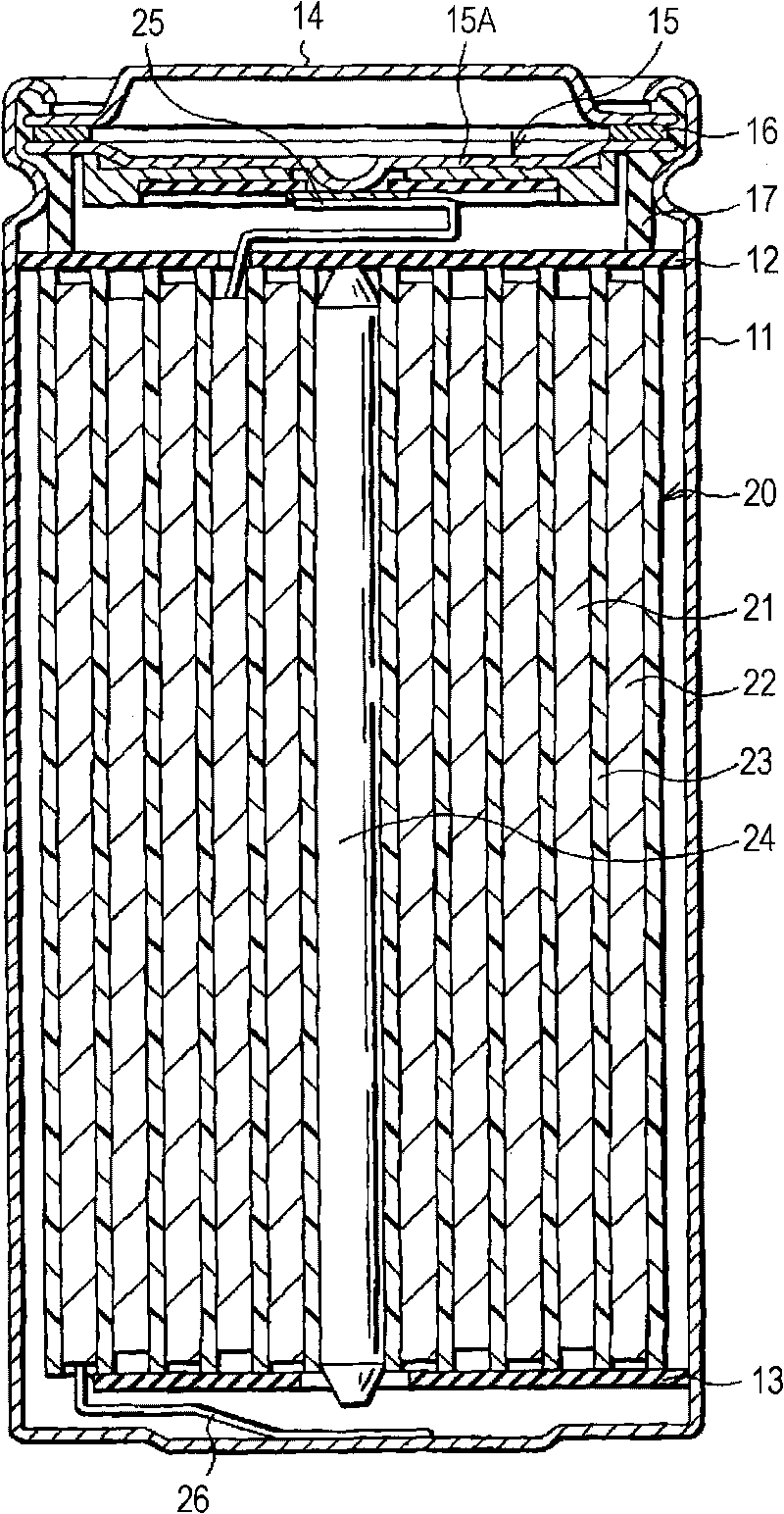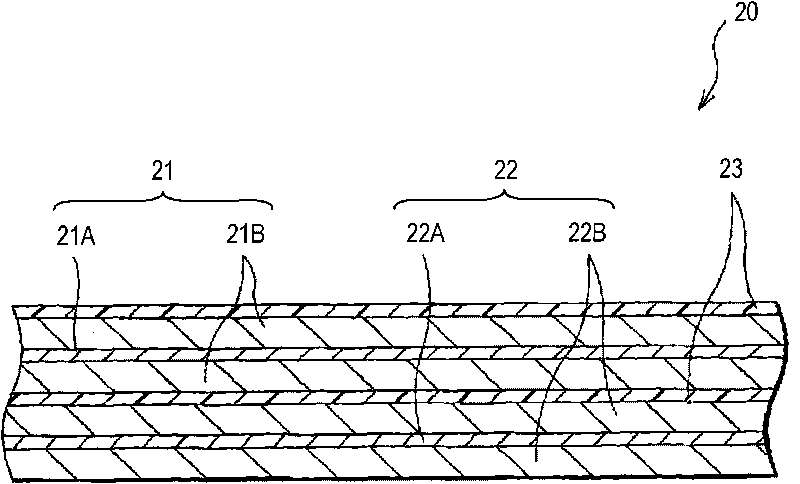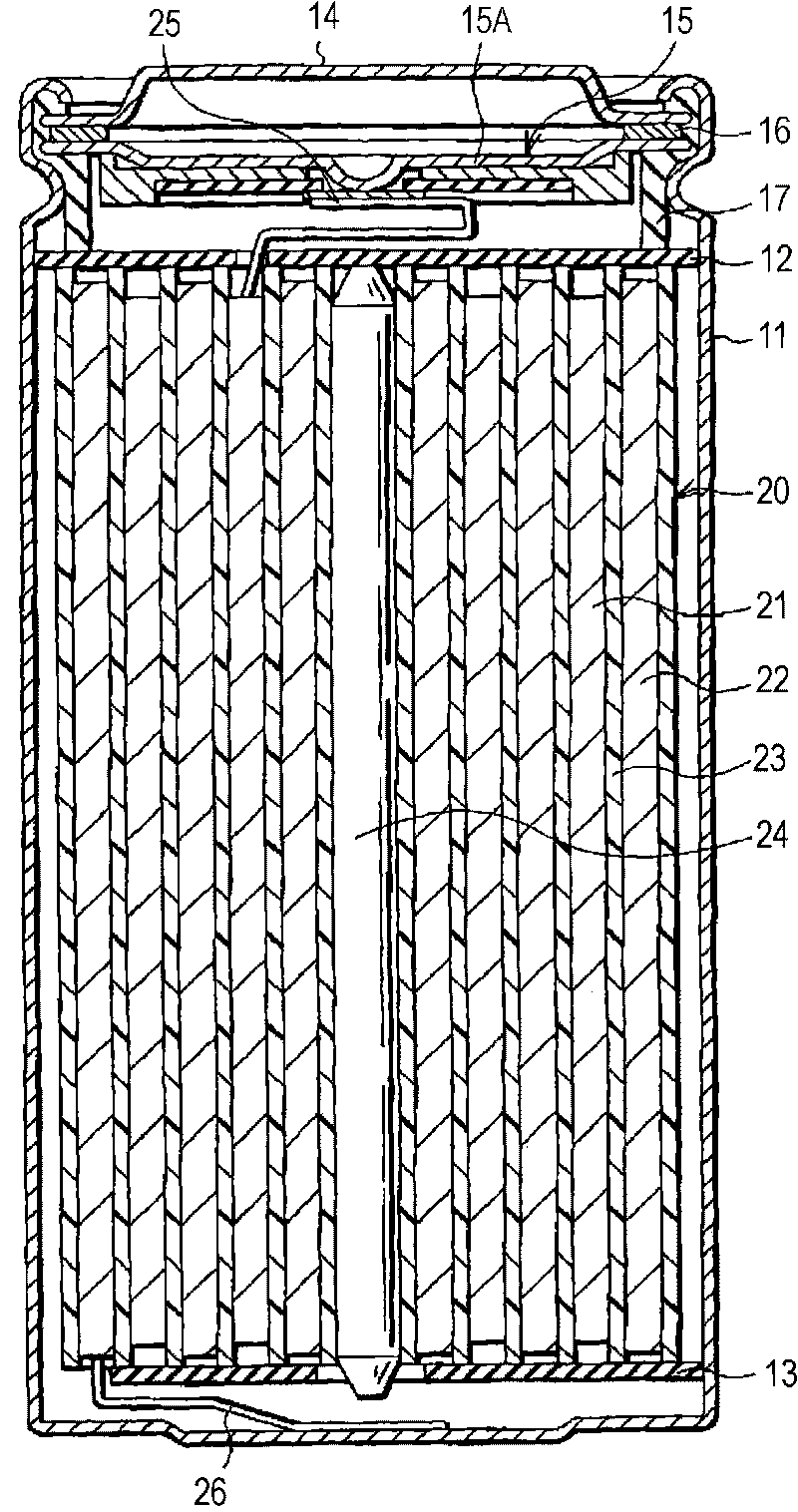Nonaqueous electrolyte secondary battery
A non-aqueous electrolyte and secondary battery technology, applied in the direction of non-aqueous electrolyte batteries, secondary batteries, battery electrodes, etc., can solve the problem of hard deposits at the bottom of the container, to delay the condensation and deposits, adhesion Excellent, stability-enhancing effect
- Summary
- Abstract
- Description
- Claims
- Application Information
AI Technical Summary
Problems solved by technology
Method used
Image
Examples
Embodiment 1~12 and Embodiment 15
[0086]Using NMP as a solvent, natural or artificial graphite made of a carbon-based material (the specific surface area (SA) of which is shown in Table 1) as a negative electrode active material, PAN as a binder, and polymer A according to this invention PVP (polyvinylpyrrolidone), PEO (polyethylene oxide), or PAA (polyacrylic acid) of the functional polymer of the invention embodiment is uniformly mixed, thereby obtaining a slurry for the negative electrode. Each addition amount shown in Table 1 represents a ratio to the negative electrode mixture. Example 13-14
Embodiment 13-14
[0087] Using NMP as a solvent, natural graphite made of a carbon-based material (the specific surface area (SA) of which is shown in Table 1) as a negative electrode active material, PAN as a binder, and PVP as a polymer A and as a polymer The PVDF of substance B was uniformly mixed, thereby obtaining the negative electrode slurry. Each addition amount shown in Table 1 represents a ratio to the negative electrode mixture.
[0088] The negative electrode paste thus obtained was evaluated as follows.
[0089] (stability)
[0090] Collect 100 mL of the slurry into a 100 mL plastic cup and determine the degree of settling after 10 hours.
[0091] A: No deposit was formed.
[0092] B: Viscosity slightly increased.
[0093] C: Hard deposits were formed on the bottom of the container.
[0094] (adhesiveness)
[0095] The slurry was coated on a copper foil and dried at 120°C by a hot air dryer; a pressure-sensitive double-sided tape was bonded to the negative electrode active ma...
PUM
| Property | Measurement | Unit |
|---|---|---|
| lattice spacing | aaaaa | aaaaa |
| density | aaaaa | aaaaa |
Abstract
Description
Claims
Application Information
 Login to View More
Login to View More - R&D
- Intellectual Property
- Life Sciences
- Materials
- Tech Scout
- Unparalleled Data Quality
- Higher Quality Content
- 60% Fewer Hallucinations
Browse by: Latest US Patents, China's latest patents, Technical Efficacy Thesaurus, Application Domain, Technology Topic, Popular Technical Reports.
© 2025 PatSnap. All rights reserved.Legal|Privacy policy|Modern Slavery Act Transparency Statement|Sitemap|About US| Contact US: help@patsnap.com



